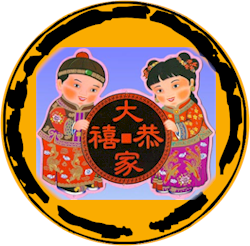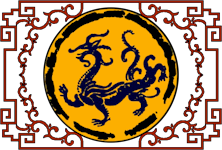
The Chinese New Year is an annual event, marking the renewal of the Lunar Calendar cycle. It does not fall on the same day each year. The holiday is the most widely celebrated event in the world, because so many people observe the Chinese Lunar Calendar.
As it's name implies, the Lunar Calendar is based on the moon and its movements in the sky relative to the Earth. The Gregorian calendar, widely used in the west, is based on the movement of the earth around the sun and so is referred to as a solar calendar.
While the Gregorian Calendar is used in day-to-day activities in China and as a civil calendar, the Lunar Calendar is kept as a cultural calendar, signalling major festivals and celebrations such as mid-autumn festival, spring festival and Lunar New Year.
Each year falls within a set of 12 Earthly Branches and 10 Heavenly Stems. The cycle repeats itself once every 60 years. The year is also assigned one of 12 zodiac animals and two consecutive years share one of 5 elements.
The western year 2011 is represented in the lunar calendar as 4708, or the 27th year of the 79th 60-year cycle. It began on February 3, 2011 and will end on January 22, 2012. It is a metal-rabbit year according to the element-animal classification.
New Year is a time for families to reunite, no matter where each member has been working or living for the rest of the year. It is the cause for the largest modern human migration, where for three consecutive days, a little more than three-hundred-million people are in transit at any given time- a third of which are flying. That is close tot he population of the entire United States. It is the only time period where regular flights between Taiwan and 'Mainland' China take place.
Celebrations include a massive feast, burning of (fake) paper money and setting off firecrackers to ward off evil spirits for the coming year.
